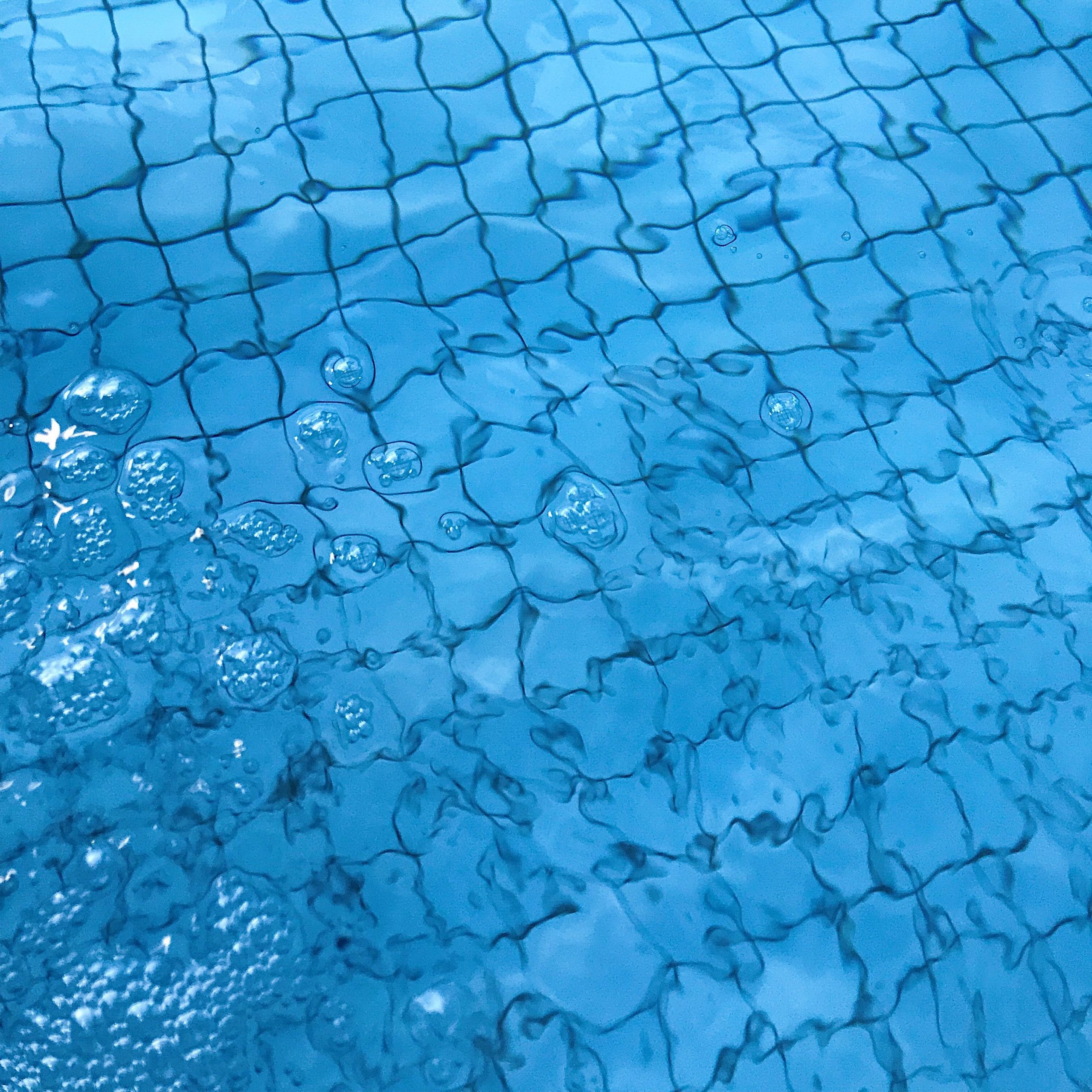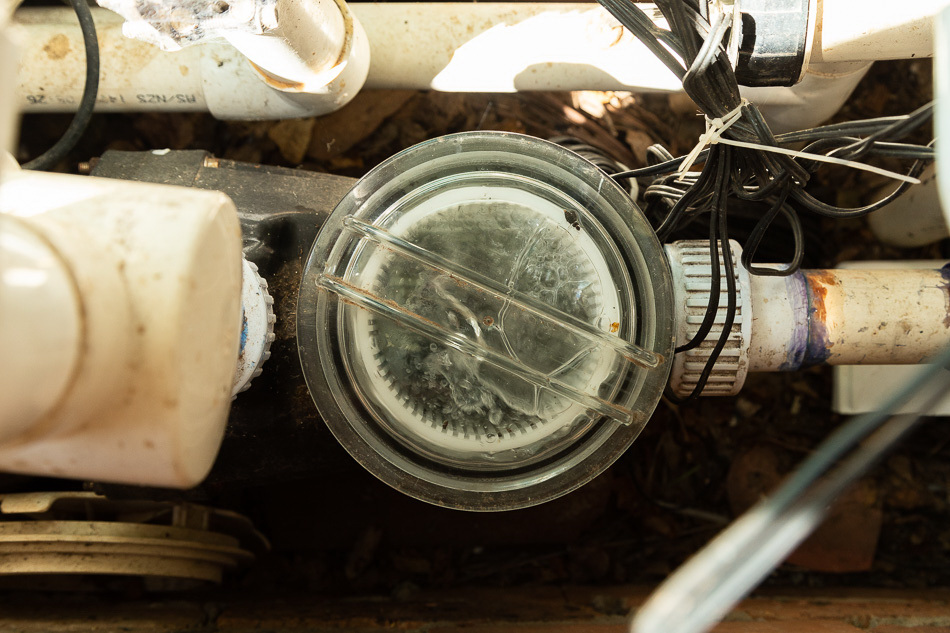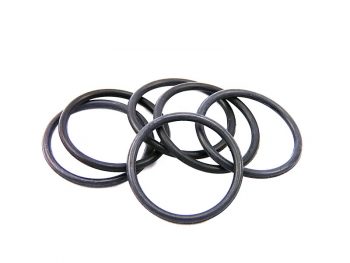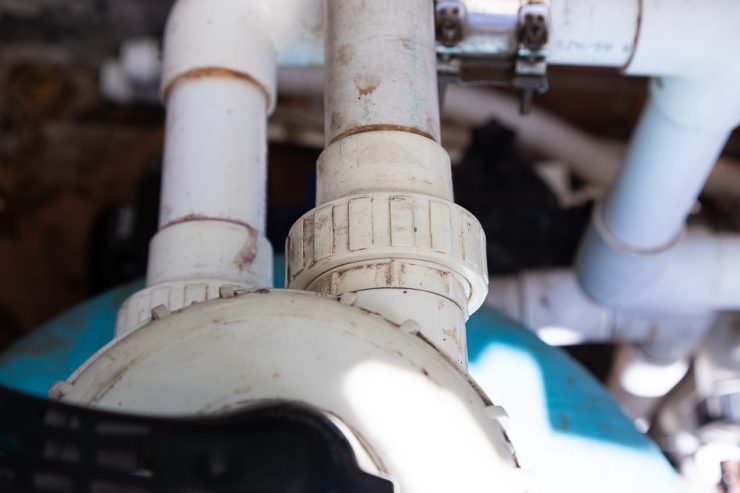Swimming pools are filled with water. So when you start to notice air in your pool or pool pump, it’s a sign that something is not right.
So what does air in your pool or pump mean? How can you identify it? And how do you bleed the air? The answers to these questions and more will be revealed in this post.
Let’s dive in.

Article Contents
Should Bubbles Come Out of The Pool Jets?
Bubbles shouldn’t come out of the pool jets or return unless you have an ozone generator installed in the pool plumbing or you just turned on the pool pump.
If you have an ozone generator, you may notice bubbles in the pool because ozone generators produce ozone gasses which are then injected into the pool circulation via Venturi injectors.
Also, when you turn on the pump, tiny pockets of air are sucked into the pool’s circulation system. These air pockets come out of the jets as bubbles. Don’t worry, these bubbles clear out within a minute. So that’s normal.
What’s not normal is when you have bubbles constantly appearing in the pool either through the wall returns (jets) or other pool equipment on the pressure side of the pool.
If you don’t have an ozone generator and you notice bubbles coming out of your pool jets in large numbers, it’s an indication that air is getting into the pool plumbing.
But to be sure you have air in the pool, you need to inspect the pool. Let’s go deeper into this.
Related Reading: Pool Return Jets Not Working (Low Pressure or No Water)
Are Air Bubbles in Pump Basket Bad?

Small air bubbles in a pool pump are normal and do not pose a problem. When the air bubbles are large or the water level in the pump is low, the pump will not operate properly.
Pumps work by sucking water from the pool and then pushing it into the pool’s filter. There will usually always be small air bubbles that can be seen through the pump lid, especially when the pump first starts. If the bubbles are large though, that could indicate a problem.
How Do I Know If I Have an Air Leak?
To know if you have an air leak, you should first check the jets or returns mounted to the pool walls. If you see bubbles coming out of the jets, it’s a sign there is air in the pool system.
You can also check for air in the pool pump by looking through the pump lid. If you see large pockets of air or bubbles trapped under the pump lid cover, there is air in there.
Another way to spot air leak is to check the pressure gauge. If the reading is more than 10psi, then there is too much air. If the reading is above 20psi, this indicates an air leak somewhere.
A high psi reading can also indicate that you need to backwash your pool filters. Try backwashing first if this is the case. If the pressure is still high after doing this, you have a problem with the filter system.
Now that you know there is air in your pool or pump. The next step is to find the cause of the problem. This means finding the source of air leak in your pool.
Related Reading: 6 Reasons Why Your Pool Pump is Surging or Pulsing (And Fixes)
6 Common Causes of Air Leaks or Bubbles in Pools
Excess air bubbles in the pump or air bubbles coming out of the jets of the pool are almost always caused by a bad seal or damaged pipe or pump. The location of the air leak will always be between the pump and the skimmer inlet of the pool.

Pumps suck the water in from the pool and if the pipes, seals and pump are not airtight, the pump will suck air in. To fix this, start checking the pump and the seals between the pump and the skimmer.
Here is a list of 6 things to check in your pool for an air leak:
1. Defective O-Rings or Seals

One common reason for having air pockets in the pump is a damaged or loose O-ring. The o-rings are rubber-like hoops positioned under pipe attachments and pool equipment lids.
If the o-ring is cracked, then it will allow air to pass through. If it’s filthy or affected by debris, then it won’t allow the lid to seal tightly. There will be tiny gaps that allow air to be sucked into the pump.
Tip: If after inspecting the o-ring, you notice black stains on your fingers or gloves, it’s a sign that the o-ring is degrading and needs to be replaced.
How to Inspect The O-Rings
- Turn off the pool pump
- Remove the lid on the pump or pool equipment.
- Take out the O-ring and inspect for cracks or filth.
- Replace damaged, misshaped or loose O-rings.
- Close the lid, ensuring it seals tightly in place.
Tip: To prevent the O-ring from drying up and splitting, you should lubricate the O-ring with O-ring lubricant.
- Extends the life of rubber seals
- Creates a better seal & stops leaks
- Suitable for pools, spas, autos, RVs, boats, plumbing
If the O-ring isn’t defective, then that’s not the cause of the leak. Next, you should check…
2. Pool Pump Drain Plug Not Sealing
The drain plug is usually positioned in the pump housing behind the pool pump or filter. If you drained your pool a few days ago, this might be the cause of air bubbles in the pool.
When the drain plug isn’t sealed tightly after draining a pool, it can cause leaks and allow air to be sucked in the pool’s circulation system.
How to Inspect the Drain Plug
- Turn off the pool pump
- Inspect the drain plug(s) for leaks.
- Seal the drain plug tightly so it’s not loose.
- Damaged drain plugs should be replaced. If the drain plug is loose, you can use plumber’s tape to give it a tighter grip.
- PTFE tape used to seal threads
- Must-have when joining metal threaded components
- Ensures a leak-free seal
Tip: To prevent the O-ring from drying up and splitting, you should lubricate the O-ring with O-ring lubricant.
Click here to check the price >>
If the drain plug isn’t defective, you should check…
3. The Pool Pipe Unions

Pool pipe unions are common with in-ground pools. Unions are attachments that join pool pipes together making it easier to remove and replace pool pipes.
If the unions are loose, then air can get into the pool plumbing from there. Also, unions have an O-ring inside.
If the O-ring is defective, it will prevent the union from sealing tightly, and this can allow air into the pool system.
How To Inspect Pool Pipe Unions
- Turn off the pool pump
- Inspect the parts of the pool plumbing where unions were installed
- If you suspect leaks in a union, unscrew it and check the o-ring inside to ensure it’s tightly sealed. (You’ll need a wrench for this).
- Inspect the union flange.
- Replace damaged unions, o-rings and pipe attachments as necessary.
- Seal the union with plumber’s tape so it’s airtight.
Next, let’s check…
4. Pool Water Level too Low
If the pool isn’t filled to the required level, then water will be below the skimmer basket and this means that the pool pump will suck in air.
This will result in bubble formation in the pool plumbing and through the return jets.
How to Inspect The Pool Water Level
- Check the water level in the pool. The right water level should be at or above the mid-point of the skimmer basket.
- Add more water to the pool if the water level is low
- Run the pool pump
- Inspect for bubbles. There shouldn’t be bubbles anymore if this is the problem.
Tip: after refilling a pool, you should test the water chemistry levels and readjust it so it’s balanced.
If you still notice bubbles, you should check…
5. Damaged Pool Pipes
Though very unlikely, one of your pool pipes may be damaged. This is more common with old and poor quality pool pipes. Even a hairline crack in the pool plumbing is enough to allow air.
How to Inspect Pool Pipes
- Turn on the pool pump to ensure water is being circulated.
- Inspect each pipe by listening closely. If you hear a hissing sound, then that pipe might be defected.
- Check for water leaks and damp areas. Damp areas indicate water is leaking underneath or around the pipe.
- Replace damaged pipes.
Tip: You should use rigid PVC pipes for your pool plumbing. Next, let’s check…
6. Damaged Skimmer
There are a few things that can cause air in the skimmer. These include the weir and the position of the skimmer basket.
The weir is a flap that regulates water flow into the skimmer. If the weir is stuck or blocked by pool toys, the water flow will be disrupted and this can cause the system to suck air.
Also, if the skimmer basket is out of place or clogged by debris, it can prevent proper water flow leading to trapped air pockets in the pool circulation system.
Tip: Always check the position of the skimmer weir every time you clean and replace the filter basket.
How to Inspect The Skimmer Basket
- Turn off the pool pump
- Take off the skimmer lid
- Take out and empty the skimmer basket. Doing this gets rid of debris in the basket.
- Check the skimmer weir if it’s stuck
- Clean and return the skimmer basket.
Tip: If you spot or hear any of your pool equipment gurgling for water or making a spurting noise, that pool equipment has air in it.
We have explored the common ways air gets into your pool. If none of these is the problem, then the leak is being caused by pool equipment below the ground. For this, you’ll need to call a professional for help.
This is because having air pockets in your pool or pump can cause problems. Let’s go deeper into this.
Related Reading: What is a Pool Skimmer Sock, and Do You Need One?
There are Pockets of Air in My Pool. Is This a Problem?
Having air pockets and bubbles in your pool is an indication of several possible pool equipment problems. Your pool components weren’t designed to suck air. So if air is getting in them, they will get damaged and the system will not run correctly.
Let’s check out the risks of having air pockets in your pool system:
Poor Water Flow
The biggest problem of having air in your pool or pump is a low water flow. This is because air in the pool system will restrict proper water flow.
Burnt Pool Heater
If you have a pool heater installed and there is an issue with the water flow, then the heater will not get enough water. This will could cause the heating mechanism to burn out.
Damaged Pool Pump
If the pool pump is sucking air, then it may lose its priming. The pool pump can also overheat or cavitate. This is more common with in-ground pools.
The function of a pool pump in in-ground pools is to pull water and distribute it through pool equipment into the pool. Pumps that pump liquid are not designed to run without the liquid. The liquid usually lubricates and cools them.
If the pool isn’t pulling enough water, then the pool pump will overheat, possibly causing irreparable damage.
Dry Pool Filters
If air is getting in your pool through the skimmer housing, then the pool filters will be starved of water. This will result in poor water filtration and cleaning. What follows?
Cloudy Pool Water
You guessed right. If the pool water isn’t being cleaned properly, then the water will become cloudy or murky. Your pool might even host an algae party in a few weeks. All because of some tiny pockets of air.
Related Reading: Cloudy Pool Water: Why & How to Remedy
How to Prevent Air From Getting into Pool and Pump
It’s very difficult to stop air from getting into the pool completely, This is because there will still be air pockets inside the plumbing lines during the initial pool startup.
But you can stop the amount of air from reaching a level where your pool equipment can get damaged. How?
- By priming the pool pump properly. This ensures that the pool pump is constantly getting water.
- By inspecting pool equipment covers to ensure they are tightly sealed.
- By using plumber’s tape to seal equipment covers and valves. This prevents air from getting into the pool plumbing.
Tip: bleeding air from the filters regularly also helps to control the air pressure in the pool system.
Final Thoughts
Overall, having air pockets in your pool or pump can cause long-lasting damages to pool equipment. But you can prevent this by keeping tabs on your pool equipment and fixing any issue before it becomes a major problem.



